#Prof. Alan Powers
Explore tagged Tumblr posts
Photo





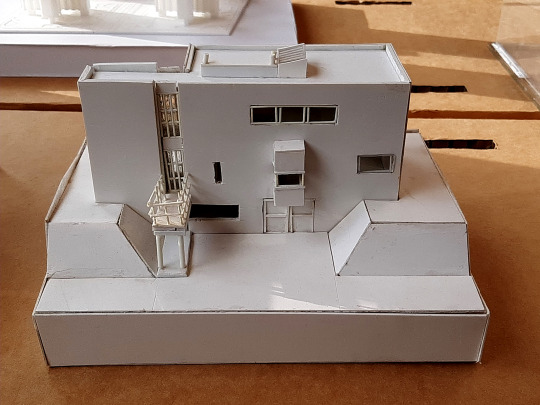




"Le Corbusier’s Models of Worldmaking"_ London South Bank University _ 21.03.2023 - 06.04.2023 The School of The Built Environment and Architecture at London South Bank University (#LSBU) hosts an international symposium, reconsidering an exhibition of 150+ models of Le Corbusier’s built and unbuilt projects. The Symposium will take place in: Lecture Theatre A, Keyworth Centre, London South Bank University (#LSBU), Keyworth Street, London SE1 6NG. Thursday 30 March 2023, 17:30'-20:30' Registration link: https://www.eventbrite.co.uk/e/le-corbusiers-models-of-worldmaking-tickets-592126023877 The exhibition of models is open to the public from 21 March to 06 April 2023 in the foyer of Keyworth Centre, #LSBU. Since the early 20th century Le Corbusier’s projects have been unavoidable points of reference in architectural knowledge and practice. Their roles, however, have changed historically from avant-garde and polemic statements of icons of the modernist movement, to stigmatised and politically charged constructions, and, in recent years, to contested grounds for reflections on ethical, socially-aware, and ecologically-just practices. His projects, whether built or unbuilt, operate in the tension between architecture imagined and architecture conceived. This space in-between is precisely the quality that turns them into the driving force for progression and reconsideration of the field of architecture. Their discursive, imaginative, and projective qualities have produced socio-spatial imaginaries and expressible fantasies. The symposium celebrates an exhibition of 156 models of Le Corbusier’s built and unbuilt projects proposed for x countries. It brings together researchers, architects, and scholars to revisit Le Corbusier’s Models of Worldmaking examined through various architectural, pedagogical, and theoretical perspectives. The speakers outline a systematic form of enquiry reflecting on key experimental and methodological applications of Le Corbusier’s work, ones that could be catalysts of change or critical reflection on our radically changing profession. Convened by: Dr. Hamed Khosravi and Prof. Igea Troiani. Guest Speakers: Brigitte Bouvier (Director, Fondation Le Corbusier) Prof. Alan Powers (London School of Architecture) Prof. Tim Benton (Open University) Rene Tan (Director, RT+Q) Layton Reid (Visiting Prof. at University of West London). The event is supported by grant funding provided by #LSBU.
#Le Corbusier’s Models of Worldmaking#London South Bank University#LSBU#Dr. Hamed Khosravi#Prof. Igea Troiani#Brigitte Bouvier#Prof. Alan Powers#Prof. Tim Benton#Rene Tan#Layton Reid#Spyros Kaprinis#2023#Le Corbusier
51 notes
·
View notes
Text
Complete List of Public Domain McGuffin Materials
I wanted a clean collection of these based on @titleknown original post, just for ease of reference and adding a few along the way.
Also, HAPPY PUBLIC DOMAIN DAY!
Cavorite - An Anti-Gravity Metal from First Men On The Moon by H.G. Wells.
Hihi'irokane - From "The Takenouchi Documents" (1935). A super durable metal that never rusts and is also a conductor of heat. In other words, it's Minecraft Red Stone.
Taduki - From the Alan Quartermain stories, a drug that allows users to relive past lives via smoking. It's a great framing device, and was used as one in the original stories.
The Absolute - from "The Absolute At Large". Byproduct of a matter-to-energy conversion. Implied to be the element of 'Divinity'.
Eitr - Source of all life in Norse Mythology. The mixing of the FIres of Muspelheim and the ice of Nifilheim -- but also a deadly poison to the earth.
Fleury's Gas - Rudyard Kipling's super gas from his story "With the Night Mail." Used to run Zepplins. It expands explosively fast as a gas and is both powerful and rigid. It can be liquified with Fleury's Ray. Produces a lot of power and acts as Hydrogen. Could be used very easily in Neumatics (ROBOTS!)
Tulu Metal - Lovecraft invention. rare space-metal. Extremely magnetic. Speculatively, it could do space-warping weirdness (given Lovecraft stories, that tracks).
Abyssal Gold - The Gold of the Deep Ones. It's whitish-gold alloy with a weird lustrousness. No special properties, it's just weird. And rather pretty. Rare type of gold are sure to go for a higher market value.
Alkahest/The Universal Solvent - Alchemy dissolver. It dissolved/breaks apart whatever it comes across.
Jeckyll's Compound - Most people use the Hyde formula as shorthand to make Hulk-knockoffs, but the reality of it more than that. Hyde is not just a coalescence of a man's "Dark Impulses" but a chemical 'disguise' to allow a person to indulge in whatever a person wants.
The Red Weed - A plant native to Mars from War of the Worlds. It tastes metallic, absorbs water, grows extremely quickly, and is bioluminescent.
Starlite - A purportedly heatproof material. Up to 90% organic.
Rossum's Protoplasm - Rossum's Universal Robots, the McGuffin that makes the robots move and behave.
Liquid Electricity - Glowing energy liquid. It was a common belief about Electricity in the early days, so it ended up in a lot of stories.
Herbet West's Re-Animation Fluid - From Lovecraft's Herbet West: Reanimator. It chemically kickstarts the mechanical process of life in organic tissue.
Solarnite/Solarbenite/Solarite - Plan 9 From Outer Space. It causes light particles to... explode.
Vril - The life energies harnessed by an underground utopian civilization. The energies are controlled by staves and there's different type of staff to control Vril in different ways. It can be used to heal, to destroy, or to enhance organic material.
Herakleophorbia IV - The Food of the Gods of H.G. Well. Organisms that ingest this chemical quickly grow to 5 to 7 times their normal size. This is used primarily on livestock to increase their food yield, but it naturally gets eaten by pest animals. Many common household pest insects are now the size of a person's thumb or their hand! A rat is now 6 to 9ft long. And if some jerk feeds it to an Alligator... it now as large as a blue whale.
The New Accelerator - From the HG Wells story from the same name. Within the story, Prof. Gibberne creates a drug that enables the user’s mind and body to gain temporary super-speed, so that everything in the world appears frozen solid as time appears to slow.
There are downsides to being a 1901 version of the Flash however. Users are still subject to friction, so moving while on the drug causes your clothes to get singed (this same friction making it impossible to breathe is ignored, however).
Devil's Foot Root - From the Arthur Conan Doyle Sherlock Holmes story The Adventure of the Devil’s Foot. A poison made from an African root, which vaporizes when heated, leading to those exposed going mad or dying after inhaling the fumes.
Basically, works like the Scarecrow’s fear toxin from Batman, and is considered rare enough that someone has to specifically use some from a stolen from the collection of someone who had to gather it personally as an explorer. At least, at the time.
The White Powder - The novel of The White Powder by Arthur Machen, wherein a student is prescribed a drug made from a mysterious white flakey substance. His sister begins to worry about his sudden changes in mood and personality, which is only compounded when his prolonged abuse of the titular White Powder causes the student to literally melt.
One of Machen’s more famous stories, would go on to be listed as among Lovecraft’s favorite's and inspiring future writers, from the finale of Lovecraft’s Cool Air to one Stephen King story where a tainted six pack turns a dude into a blob monster.
#Public Domain#Substances#Fiction#Writing#Writing Reference#H. G. Wells#H. P. Lovecraft#Lovecraft#Arthur Conan Doyle#Doyle#Rudyard Kipling
44 notes
·
View notes
Note
Hellooo Mr. Haitch!
Since you're a former literature prof., which is what I happen to be studying, I was wondering what books you like recommending to people? Genre doesn't matter, just interested in what your literary tastes are (^-^ )
What a dangerous question. I'll focus on the books that profoundly affected me and a few reasons why.
Red Shift/The Owl Service by Alan Garner
I lump these two together a lot, because they're thematically linked. The Owl Service is an easier read, being an early YA novel but there's a feeling to it that's profoundly disturbing - three young people in rural Wales forced to play out a love triangle from Welsh mythology that typically ends in betrayal and murder. Red Shift is also concerned with time but it yanks you back and forth through large stretches of history, and in each episode a young man tries desperately to be loved and understood. It's weird, sometimes challenging to follow, and overwhelmingly sad at times.
The Hundred Thousand Kingdoms by NK Jemisin
Jemisin's impact on fantasy cannot be overstated, and this book is where that impact was most keenly felt. She dumps out the inherited tropes of fantasy and inspects each in turn, destroying what is no longer helpful, and cherishing those of enduring value. An, ostensibly, white powerful monarchy has enslaved the gods - leaving the world paralysed beneath their heel. Love it
The Daevabad Trilogy by SA Chakraborty
Picking up where Jemisin left off, Chakraborty's trilogy about djinn and daeva locked in a (initially) cold civil war in a holy city is fundamentally about intergenerational trauma and our place within messy historical contexts. Complex, sometimes harrowing, but endlessly brilliant.
Finders Keepers by Stephen King
I didn't get along with the rest of the Mr Mercedes trilogy, and there are better King novels out there but none that I love as much as Finders Keepers. It's a love letter to literature about the transformativel power of stories, as well as the dangers of obsession.
Slaughterhouse 5/God Bless You Dr Kevorkian by Kurt Vonnegut
I love Vonnegut's work, his voice, his outlook, and I find it hard to choose between these two. Slaughterhouse 5 is, on the one hand, a novel about WWII, but it's also about time travel, death, and looking for meaning. God Bless You Dr Kevorkian is just lovely. No other word for it - it's lovely, a hug in a book where everyone is embraced with love and humour.
Ishmael by Daniel Quinn
A lot of people wrote this book off when Oprah and her ilk praised and elevated it, but I know they missed the point - because nothing changed. Put simply it's about a jaded environmentalist receiving history lessons from an intelligent and telepathic gorilla, who teaches him an alternate history to the world - history according to gorillas. There's a lot of ruminations about the nature of stories and culture here and it is WELL WORTH YOUR TIME, although you might not be the same person once you've finished reading it.
(Non fiction now)
Capitalist Realism by Mark Fisher
Mark Fisher was brilliant, in spite of the transphobic nonsense he embraced towards the end of his life. Capitalist Realism is often the book I suggest to people when they're overwhelmed by a fundamental feeling of wrongness, that there's just something bad in the world that they can't put their finger on. Fisher hits most, if not all of the key points you might need to understand why. His The Weird and the Eerie is also fantastic.
We Need New Stories by Nesrine Malik
A book about prevailing cultural and political narratives, with a good deal of depth without getting stuck in the weeds. This helped me unpack a lot of my own thinking when I was doing my own PHD and I'd strongly recommend it.
American Holocaust by David Stannard
MASSIVE CONTENT WARNING: I recommend this whole heartedly but it is a graphic detailing of the horrors of European colonialism in the Americas. It will challenge and uproot a great many beliefs or suppositions you might have about history, but it will leave its scars. Necessary but painful.
The Human Planet by Lewis and Maslin
The anthropocene is at the heart of my work, and this is probably the definitive book in my mind that's accessible to the general reader. Persuasive and detailed but also accessible.
Zen in the Art of Writing by Ray Bradbury
This book should be essential reading for every creative writing class. Read it and you'll see why.
[I'll stop there as I could go on endlessly]
15 notes
·
View notes
Text
I looked up my best man Alan Turing on Wikipedia because the occassional paranoia of "pls don't let the historical figure you actually like be problematic" and-


That couldn't have been me. No way in fucking life. My magnum opus of school determination was falling into a puddle in autumn and not wanting to go home and change because I was scared of being too late

Team Turing in this. Both for arguing with the teacher hardcore enough to make it into notes and his opinion


"Since there were no computers with enough power to do it (run a self-written chess program), he did it himself and calculated every move himself" brother you are insane

"He lost the only documented game against a colleague"
It took him 30 fucking minutes to calculate every move and then he loses??? Alan... T_T

Sporty IT guy? Not ba-

"(...) he had to end his sports career due to a leg injury"
...Ok, nevermind.

I... have terrible news for his stress level


I feel like being eccentric is just what happens when you work in IT

I-i-i... Prof what the fuck😭

Listen, I get it, but mood

America: Look, we are working very hard! :DD Alan:

I'm too lazy to piece the screenshots together in a comprehensible manner, but this dude essentially figured out DNA and other biological hijinks through maths? Bro I didn't even know you could DO that!

...You can't be serious. He's a fucking squirrel T_T


There is the controversial material! To be honest, I expected waaay worse though; 19 is legal age (in Germany at least, dunno if it's there) where actual consent can be given and... I just expected worse, that's all.
1912 to 1951 is... 39? Which makes 20 years of age difference? That's an uncool number, don't get me wrong, I just expected worse.
OK so his death? Might have been suicide, the picture of accidental inhalation of cyanide fumes painted in this article sounds pretty plausible to me if I'm honest.
Bonus, the German dialect versions:




#plattdeutsch had less funny looking segments than nordfriesisch#:(#justice for my platt#alan turing
2 notes
·
View notes
Text
youtube
By: Louisa Clarence-Smith
Published: Dec 29. 2022
Maths professors at top UK universities will warn ministers on Thursday that academics are too scared to challenge damaging attempts to “decolonise” the curriculum.
A dozen leading academics have written to Claire Coutinho, the Education Minister, calling for more protections for free speech at universities, where many professors fear it is too “personally risky” to challenge the decolonisation agenda.
For maths degrees, professors are being pressured to explain how they are presenting a “multicultural and decolonised view” of the subject. In a recent consultation, the Quality Assurance Agency, which advises universities on course standards, said maths professors need to “present the work of a diverse group” of mathematicians, and ensure students are aware if they had “connections to the slave trade, racism or Nazism.”
A group of professors will warn on Thursday that such guidance “risks politicising the subject of mathematics and presenting a skewed perspective on its history.”
'Personally risky'
They said in a joint letter, seen by The Telegraph, that it also “infringes on the academic freedom of mathematicians to teach their subject according to their best professional judgement”. However, they warned that academics “who challenge orthodoxies on topics such as gender identification and diversity face physical intimidation from student activists”.
“Many mathematicians see it as personally risky to suggest that 'decolonising the curriculum' might not be the best way to encourage more Black and minority ethnic people to take up mathematics,” they added.
Signatories of the letter include Prof Alan Sokal of University College London, Prof Abhishek Saha of Queen Mary University of London, Prof Jane Hutton, a medical statistician who works at the University of Warwick, and Dr Yuri Bazlov from the University of Manchester.
They are urging the Government to fight to pass the Higher Education (Freedom of Speech) Bill in its original form, despite opposition in the House of Lords. Clause 4 of the bill would give academics and students the power to sue universities if their freedom of speech rights are breached. The Government tabled amendments to the bill which would mean academics could only use those powers as a “last resort”, after first pursuing complaints through the procedures of the relevant university and the higher education regulator.
Personal cost of raising complaints 'far too high'
However, responding to the amendments, the mathematicians said: “We do not think this would give us the protection that we need. Universities have vast resources and power compared to individual academics. If academics are required to exhaust all internal processes…and then spend up to 12 months taking their complaint through the Office for Students before they can begin the lengthy process of going to the courts, we believe that the personal cost of raising any complaints would be far too high, rendering the system ineffective.” Ms Coutinho has previously said that the Government remains “resolute in our commitment that academics and speakers will have the right to go to court where this fundamental right has been denied.”
A spokesperson for Universities UK said: “Universities work hard to create the right conditions to protect and promote free speech and academic freedom across their campuses, and there are already significant legal duties placed on universities to uphold freedom of speech. The Government’s proposed changes to the Freedom of Speech Bill are helpful in making the new legal tort more targeted in scope, reducing the risk of university resources being wasted defending frivolous or vexatious claims.”
==
Secular blasphemy laws.
#Andrew Doyle#Jane Hutton#Free Speech Nation#mathematics#woke math#decolonize#decolonize everything#decolonize math#academic corruption#corruption of education#intellectual laziness#cultural imperialism#University of Warwick
30 notes
·
View notes
Text
Based on some quick searches, all of this is true, however the part that Alan's death was a suicide might not be accurate.
You can read more about it here but basically it is known that he died of cyanide poisoning, and there was a half eaten apple that was beside him, but the apple itself was never checked to contain any cyanide.
(For context: Alan had a habit of eating an apple every night before bed.)
Additionally, yes he basically was given an ultimatum of either go to jail or take medication to "cure" being gay, but apparently, as described by Turing himself when talking with a friend;
"The day of the trial was by no means disagreeable. Whilst in custody with the other criminals, I had a very agreeable sense of irresponsibility, rather like being back at school."
Like, he was taking the whole thing in good strides. Yes from the perspective of our modern day ethics, what Alan had to go through is awful, but back in the day this was, to some extent, water under the bridge.
So how does someone just accidentally get cyanide poisoning?
...so to directly quote from the article:
"Prof Copeland believes the alternative explanation made at the time by Turing's mother is equally likely.
Turing had cyanide in his house for chemical experiments he conducted in his tiny spare room - the nightmare room he had dubbed it.
He had been electrolysing solutions of the poison, and electroplating spoons with gold, a process that requires potassium cyanide. Although famed for his cerebral powers, Turing had also always shown an experimental bent, and these activities were not unusual for him.
But Turing was careless, Prof Copeland argues.
The electrolysis experiment was wired into the ceiling light socket.
On another occasion, an experiment had resulted in severe electric shocks."
"And he was known for tasting chemicals to identify them."
...Sorry, just had to take a second to process the possibility Alan might have fallen victim to such a relatable ADHD-esque thing. Moving on.
"Perhaps he had accidentally put his apple into a puddle of cyanide.
Or perhaps, more likely, he had accidentally inhaled cyanide vapours from the bubbling liquid.
Prof Copeland notes that the nightmare room had a "strong smell" of cyanide after Turing's death; that inhalation leads to a slower death than ingestion; and that the distribution of the poison in Turing's organs was more consistent with inhalation than with ingestion."
Anywho, obligatory "we're not an expert" but feel free to treat this as your daily reminder that sometimes gay people, even incredibly smart gay people, are just people enjoying thier life and make mistakes like the rest of us, like accidentally getting cyanide into your system in your nightmare room.
homophobes are not allowed to use computers because the inventor of the computer was gay
464K notes
·
View notes
Text
The Encyclopedia Of Unusual Phenomena (Part 1)
Encyclopedia of Unusual Phenomena I Compiled by: Prof. Alan Levinson Illustrations: M. Redricks Descriptions: Assistants of Prof. Levinson as well as eyewitness accounts of various explorers around the Crater
Preface
This compilation is an attempt to document and study the strange phenomena around an area known by the locals as the "Green Crater". The Green Crater is a vast area covering the majority of the Northern Wastes. While the crater itself is small, the area surrounding it yields countless phenomena waiting to be discovered. Some are hazardous, and some are harmless. The inside of the crater is still unexplored mainly due to the hazardous effects that it brings upon nearing it. High concentrations of radiation and toxic fumes were detected by the Expeditionist's attempt at approaching it with a vertibird. From above, it would resemble an overgrown rainforest hence gaining the name Green Crater. And at night, the crater itself radiates a bright green glow, another reason why it gained the name it has.
What is an anomaly
An anomaly (formerly called Phenomena) is/are occurrences that can be found across the Crater's surrounding area. Dangers vary differently and there are many being discovered as of present day. It is unknown when these first appeared, a popular rumor amongst wastelanders state that it was the effect of an unknown object entering earth during the early hours of the Great War wherein strong gusts of radioactive wind was found the most. Studies done by expeditionists and scientists state that it's probable that this were the result of some unknown technology, possibly extraterrestrial, that released various phenomena across the surroundings.
Detecting the potency of an anomaly
Levinson Scale - Named after a professor studying the area around the crater, the Levinson Scale is a unit of measurement that is used to indicate how powerful an anomaly is. The minimum of the scale is 1 Levinson, the maximum is 10 Levinsons.
If an anomaly is measured by 10 Levinsons, it is a powerful or even harmful anomaly. This can also be used to measure thaumaturgical abilities, phenomena, etc. This is also used for the "Urchin" Time-Space anomaly detector. [See "Time-Space anomaly detectors" for reference.]
The Green Crater
The Green Crater is a vast area covering the western part of the Northern Wastes. The area itself is covered in strange vegetation, from afar it would resemble an overgrown rainforest hence gaining the name Green Crater. Much of the area is still unexplored as of 2299 and attempts by the locals of the Northern Wastes yielded little to no results.
It is unknown what caused the vegetation to grow at this magnitude, a few claims from the locals stated that it has been there for a long time, possibly pre war. Some stated that it was the Spores that caused the plants to overgrow.
The range of the overgrowth is approximately 50 kilometers of area and the crater itself is much larger than the overgrowth.
It is unknown how vegetation survives the harsh weather and radiation, from observations made by a party of Expeditionists, the plants have a minute concentration of a strange bacteria only dubbed as the "String" by scientists.
==============================================================
List of known anomalies discovered in the crater (As of conceivementof this encyclopedia):
Red Devil Snakeslop/Moists Wireblob (abv. Wire) Gravi-Concetrate (term coined from a European novel) Rust Hair Crimson Gate Distortion
0 notes
Text
Prof. F Hendricks Dragon Notes: Cloakwing TigerDragons
Scientific Name: Draconis Tigris Radiant
Professor Hendricks here starting off with a couple notes. 1 TigerDragons, for all intents and purposes, are biological anomalies even among dragons. Each TigerDragon breed has something that defies biological norms among other dragons. 2 i rarely get spooked by dragon encounters. i've had my fair share of encounters with far more dangerous dragons. But my experience with this breed spooked me far more.
It all started when we heard an emaciated cloudstrider corpse had been found in a forest nearby a city with a nuclear power plant. We didn't think too much about the location, our concern was the state the corpse was in. Cloudstriders thrive in sunlight radiation, so to hear one was deprived of such solar radiation was very rare.
We being myself and my team of colleagues, we arrived at the location and met with dracinary expert, Dr. Leah Davena. She had doctorate in medical sciences involving dragons, Dracinarian. She had confirmed that the cloudstrider was indeed malnourished of all solar radiation in it's blood. We decided to check archived weather reports for the region and had noticed a drought and heat wave. Nothing in the sky that would've denied any sunlight.
We were stumped as what could drained a cloudstrider of such radiation. Dr. Alan Menferd, a team member asked if perhaps they could reach out to the nuclear power plant to see if they had any possibilities as they would understand more radiation science than a group of Dracologists and Dracinarians. After a calling asking for an audience, we were granted permission to come visit.
It turns out that they had been recently having a decrease of radioactivity in the production. So there was an investigation made and they thought a creature was spotted in security cameras. Staying over night was proposed as the footage suggested something draconic was afoot.
About 11 in the evening, we were exploring to make rounds in investigation. That's when we spotted it, a crack in a containment unit meant to hold radioactive materials. Realizing we were exposed, meant we were now contaminated by nuclear activity. We were unsure what to do when we spotted, a pair of purple glowing eyes gazing at us.
It was dog size and quadrapedal with wings that draped down to the tip of it's tail like a cloak. grey scales with black stripes off shoot by the purple glow in it's eyes and maw. It pounced me and opened it's maw and inhaled. My colleagues noted a faint glow being drained from my form and into it's maw. It lashed out at them and repeated the same actions before pouncing the cracked container and began inhaling the radioactivity from it.
Once it left, we scanned ourselves with Geiger counters and saw us removed of it. We realized that we discovered what was only speculated by cryptodracologists, a Cloakwing TigerDragons. A Dragon who's main diet revolves around radioactivity and irradiated creatures.
The next morning we set out to capture it but to no avail. We reported our findings and evidence as well as the damaged container to the facility and today, i'm still spooked by it. It was so quiet, so intent and non reactive to our movements. it was like a spectre on a haunt.
i must confirm with cryptodracologists, and perhaps see if the other speculations about these species are true, like in spirit of it's spectre behavior, could it potentially relate to the souls of the departed and if so how so? And how did it consume our irradiation in a manner that we suffered ill health effects from the contamination?
Until i get more research reported on the species, i hope to discover more than just it's anomalous dietary habits. Be safe out there to everyone who reads this... life is short...
0 notes
Text
The S&L crisis perfected finance crime

When the Great Financial Crisis hit, suddenly there was a lot of talk about the Savings & Loan crises of the 1980s and 90s. I was barely a larvum then, and all I knew about S&Ls I learned from half-understood dialog in comics like Dykes to Watch Out For and Bloom County.
As the GFC shattered the lives of millions, I turned to books like Michael W. Hudson’s THE MONSTER to understand what was going on, and learned that the very same criminals who masterminded the S&L crisis were behind the GFC gigafraud:
https://memex.craphound.com/2011/03/07/the-monster-the-fraud-and-depraved-indifference-that-caused-the-subprime-meltdown/
Hudson’s work forever changed my views of Orange County, CA, a region I knew primarily through Kim Stanley Robinson’s magesterial utopian novel PACIFIC EDGE, not as the white-hot center of the global financial crime pandemic.
https://memex.craphound.com/2015/01/15/pacific-edge-the-most-uplifting-novel-in-my-library/
That realization resurfaced today as I read the transcript of UMKC Law and Econ prof Bill Black’s interview with Paul Jay on The Analysis, when Black says, “Orange County is the financial fraud capital of the world, not America, the world.”
https://www.youtube.com/watch?v=jFH5-5D5_Lc
Black is well-poised to tell the tale of the S&L crisis. He served as a bank regulator during the crisis, and his notes on the “Keating 5” meeting were the turning point for public and Congressional attention to the crime:
https://theanalysis.news/economy/the-best-way-to-rob-a-bank-is-to-own-one-bill-black-pt-1/
In 1998, he finished a criminology doctorate at UC Irvine (in Orange County!) on the S&L frauds, entitled “The Best Way to Rob a Bank is to Own One,” a title he used for his 2005 book (updated in 2013) on the scandal:
https://utpress.utexas.edu/books/blab2p
The S&L crisis shares a lot in common with today’s financial crimes, but it had one key difference: ultimately (with Black’s help), more than 30,000 criminal referrals were made against the bankers involved in the crisis, and more than 1,000 were convicted of felonies.
The story of the S&L crisis is both a roadmap for holding finance criminals to account (a roadmap we threw away and forgot about) and a roadmap for committing gross acts of financial crime with impunity (which the finance sector studied carefully and keeps close its heart).
Black calls finance a “crimogenic environment,” in where deregulated institutions become pathogenic, “like a cesspool that produces lots of bacteria and viruses and such and causes lots of infections.”
The S&L crisis began with the Carter-Ronald deregulatory blitz. Both presidents assumed that because S&Ls (a kind of bank) in California and Texas were doing really well after deregulation, that meant CA and TX had nailed it and their example could be expanded nationwide.
In reality, the rosiness of the California and Texas S&Ls’ books was the result of “control fraud,” when a person who controls the bank is stealing from it.
Black likens this to a homeowner who commits insurance fraud — an ultimate insider, who knows the code to de-activate the alarm system and also knows just where the most valuable items are kept.
The major control fraudster of the S&L crisis was Charles Keating, a “top 100 granter” who was among the 100 highest donors to Reagan and Bush I. Keating has stolen a vast fortune from Lincoln Savings, and he was able to trade some of that loot for political cover.
Keating hired Alan Greenspan (!) to lobby for him, and Greenspan suborned five senators (the “Keating Five”) who threatened regulators with dire consequences if they didn’t stop digging into S&Ls.
This was also a priority for Reagan, whose plan for vast tax-cuts for the wealthy might stumble if it the public found out that the US government needed billions to bail out these walking-dead fraud zombies.
Reagan turned to Ed Gray, a PR guy, to run the S&L operation. Gray was hand-picked by the S&L’s trade association, and they told him flat out that he was there to make S&Ls look good — not to blow them up by investigating their balance-sheets.
The problem is that Gray — who was a hardcore Reaganite partisan and deregulation true believer — was honest, and the fraud was so obvious. The Texas S&Ls were originating fraudulent loans to build housing tracts that didn’t exist.
When Gray went out to look at these building sites, he just found endless rows of desolate concrete pads — he called them “Martian landing pads” — and abandoned ruins. These were the collateral on billions in loans!
Gray is a believer in sound finance, and this is undeniable evidence that deregulation has led to catastrophically unsound practices, so he starts imposing regulation on the S&L sector.
Keating pulls strings to sideline Gray, but Gray keeps pushing. Keating gets the leadership of both parties in the House to sponsor legislation ordering him to stop. He keeps going.
Donald Regan — an ex-Marine who went from CEO of Merrill Lynch to Reagan’s Chief of Staff — leans hard on Gray, but Gray won’t stop.
The Office of Management and Budget swears out a criminal complaint against Black for closing too many S&Ls. He won’t stop.
They go after Gray’s guy in Texas, Joe Selby, a former acting Comptroller of the Currency with impeccable credentials, demanding that Gray fire Selby. Democratic Speaker Jim Wright says Selby should be fired because he’s gay. Gray won’t budge.
Homophobia turns out to be a powerful weapon for criminal impunity. Keating sued Black and the Federal Home Loan Bank of San Francisco, claiming the bank’s gay employees had conspired against Keating because Keating was an evangelical Christian.
Gray took finance crime seriously. He had two priorities: one, eject anyone committing fraud from working at any financial institution, and; two, criminally and civilly charge those former execs and take back all the money they stole and ruin them financially.
Black and colleagues took this to heart, making thousands of criminal referrals. When law enforcement refused to act on these, they started publishing their referrals, and newspapers published stories about how none of these criminal referrals were leading to prosecutions.
Gray eventually gets sidelined by a “team player,” the disgraceful Danny Wall, who studiously ignores all the crime that has been uncovered. But then Bush I replaces him with Tim Ryan, whose marching orders are to root out finance crime.
Ryan ultimately made over 30,000 criminal referrals over the S&L scandal, and brought prosecutions against elite criminals, including Neil Bush, the son of the President of the United States of America.
Black: “Tim Ryan sacrificed his career for the public knowingly…he’s been unemployable since.”
And as for Bush I, his first major legislative priority became the removal of financial crime from the jurisdiction of independent watchdogs, so this would never happen again.
This is as far as the interview gets (it’s part one of nine!), but it’s already answering some of the most important questions the Great Financial Crisis raised, like, “Why didn’t any of the bankers who stole trillions from the world go to jail?”
Image: Dykes to Watch Out For strip #90 (1990), “The Solution,” Alison Bechdel https://forums.somethingawful.com/showthread.php?threadid=3908728&userid=99998&perpage=40&pagenumber=10
298 notes
·
View notes
Photo










"Le Corbusier’s Models of Worldmaking"_ London South Bank University _ 21.03.2023 - 06.04.2023 The School of The Built Environment and Architecture at London South Bank University (#LSBU) hosts an international symposium, reconsidering an exhibition of 150+ models of Le Corbusier’s built and unbuilt projects. The Symposium will take place in: Lecture Theatre A, Keyworth Centre, London South Bank University (#LSBU), Keyworth Street, London SE1 6NG. Thursday 30 March 2023, 17:30'-20:30' Registration link: https://www.eventbrite.co.uk/e/le-corbusiers-models-of-worldmaking-tickets-592126023877 The exhibition of models is open to the public from 21 March to 06 April 2023 in the foyer of Keyworth Centre, #LSBU. Since the early 20th century Le Corbusier’s projects have been unavoidable points of reference in architectural knowledge and practice. Their roles, however, have changed historically from avant-garde and polemic statements of icons of the modernist movement, to stigmatised and politically charged constructions, and, in recent years, to contested grounds for reflections on ethical, socially-aware, and ecologically-just practices. His projects, whether built or unbuilt, operate in the tension between architecture imagined and architecture conceived. This space in-between is precisely the quality that turns them into the driving force for progression and reconsideration of the field of architecture. Their discursive, imaginative, and projective qualities have produced socio-spatial imaginaries and expressible fantasies. The symposium celebrates an exhibition of 156 models of Le Corbusier’s built and unbuilt projects proposed for x countries. It brings together researchers, architects, and scholars to revisit Le Corbusier’s Models of Worldmaking examined through various architectural, pedagogical, and theoretical perspectives. The speakers outline a systematic form of enquiry reflecting on key experimental and methodological applications of Le Corbusier’s work, ones that could be catalysts of change or critical reflection on our radically changing profession. Convened by: Dr. Hamed Khosravi and Prof. Igea Troiani. Guest Speakers: Brigitte Bouvier (Director, Fondation Le Corbusier) Prof. Alan Powers (London School of Architecture) Prof. Tim Benton (Open University) Rene Tan (Director, RT+Q) Layton Reid (Visiting Prof. at University of West London). The event is supported by grant funding provided by #LSBU.
#Le Corbusier’s Models of Worldmaking#London South Bank University#LSBU#2023#Dr. Hamed Khosravi#Prof. Igea Troiani#Brigitte Bouvier#Fondation Le Corbusier#Prof. Alan Powers#Prof. Tim Benton#Rene Tan#Layton Reid#Spyros Kaprinis
44 notes
·
View notes
Text
Badly Describing the Hero Event Characters Based on What I Know (Future Destroyers ver)
here’s the bad guy side of things
i’ll add a link to the hero one soon
EDIT: link to hero lab side is here
~~~~~
Darkmoon (Natsuki)
Is a bad guy
But is he really?
Mainly uses his power to bring inanimate objects to life
Because he wants to free them
His heart is in the right place I guess
Kinda has a hatred for what the world has become? I dunno
Feels like a person that wants to see the good in humanity
Doesn’t like being called weak so he turns cute (weak) things into strong sentient creatures
Got amnesia ten years ago
Wants to protect his friends
Thinks Lightwing is cute
Lightwing indirectly helps him to redefine himself
Threatened to unleash an army of cute things onto Alan
Has something similar to the Hero Seed inside him
Got into a car accident
Oto the Warrior/Otomine (Otoya)
“Darkmoon did nothing wrong >:(“
Angy
Would probably die for Darkmoon (but Dark wouldn’t like that :( )
Very devoted to Darkmoon
Snuck into the Hero Lab once and got ab torture
Was saved by Darkmoon
Still visiting the lab as Otomine lol
Professor Toma/Toma the Follower (Masato)
Worked for Change Chamber
Past coworker of Prof Toki
Kinda forced Prof Toki to work on the Android Project
Now part of Future Calamity and works under Alan
Admires Alan
Would definitely die for Alan
Doesn’t like it when Alan is called defective
Willing to do things without fully knowing what they are if it means helping Alan
Alan (Ranmaru)
Android
AKA artificial demon
Very strong
Will not hesitate to kill kids
Got the hell pass
Was made from a continuation of the Android Project
Destroys things for the sake of destroying things
Camiya (Camus)
Researcher for Future Destroyers
Investigates secrets of Lightwing
Actually confronts Lightwing face-to-face on the streets at night
Chief engineer and one of the leaders of Future Destroyers
His family has special abilities and are forced to go through superhuman experiments by the gov
Joined Future Destroyers for revenge
Wants to destroy the world to avenge his family
Wants to know if Lightwing would save someone like him
Doesn’t believe he can be saved
Takes medicine
Starting trials for enhancement drug
FUCKING INJECTED THE DRUGS IN HIMSELF SIR—
If he gives up then he won’t be free from his regrets
#uta no prince sama#utapri#shining live#natsuki shinomiya#otoya ittoki#masato hijirikawa#ranmaru kurosaki#camus (utapri)
16 notes
·
View notes
Text
The Book Club - Non-Fiction
The Non-Fiction Book Club TBR list:
100 Nasty Women of History by Hannah Jewell
101 Essays That Will Change The Way You Think by Brianna Wiest
13 Things Mentally Strong People Don't Do by Amy Morin
21 Lessons For The 21st Century by Yuval Noah Haran
A New Earth by Eckhart Tolle
Are Prisons Obsolete? by Angela Y. Davis
Atlantis: The Antediluvian World by Ignatius L. Donnelly
Becoming Supernatural by Dr. Joe Dispenza
Between The World And Me by Ta-Neisi Coates
Beyond The Pill by Jolene Brighten
Boundaries In Dating by Dr. Henry Cloud & Dr. John Townsend
Calm The F**k Down by Sarah Knight
Caste: The Origins Of Our Discontents by Isabel Wilkerson
Come As You Are by Emily Nagoski
Confessions Of A Political Hitman by Stephen Marks
Confessions Of A Sex Kitten by Eartha Kitt
Declutter Your Mind by S.J. Scott & Barrie Davenport
Decoded by Jay-Z
Devil In The Grove by Gilbert King
Fear by Thich Nhat Hanh
Feminists Don't Wear Pink And Other Lies by Scarlett Curtis
first, we make the beast beautiful by Sarah Wilson
Girl, was your face by Rachel Hollis
Heal Thyself For Health And Longevity by Queen Afua
Homo Deus: A Brief History Of Tomorrow by Yuval Noah Haran
Hormonal by Martie Haselton
Hormonal by Eleanor Morgan
How The Pill Changes Everything by Sarah E. Hill
How To Be Single And Happy by Jennifer L. Taitz
How To Love by Thich Nhat Hanh
I Know Why The Caged Bird Sings by Maya Angelou
Lies My Teacher Told Me by James W. Loewen
Man's Search For Meaning by Viktor E. Frankl
Maybe It's You by Lauren Handel Zander
Men Are From Mars, Women Are From Venus by John Gray
Milk And Honey by Rupi Kaur
Misjustice: How British Law Is Failing Women by Helena Kennedy
Moody: A 21st Century Hormone Guide by Amy Thomson
Natives: Race And Class In The Ruins Of Empire by Akala
Nile Valley Contributions To Civilization by Anthony T. Browder
Persepolis by Marjane Satrapi
Pleasure Activism by adrienne maree brown
Red Notice by Bill Browder
Sacred Woman by Queen Afua
Sapiens: A Brief History Of Humankind by Yuval Noah Haran
Stolen Legacy by George G. M. James
Sweetening The Pill by Holly Grigg-Spall
The 48 Laws Of Power by Robert Greene
The 5 Love Languages by Gary Chapman
The Alchemist by Paulo Coelho
The Art Of Happiness by The Dalai Llama
The Art Of Living by Thich Nhat Hanh
The Autobiography Of Malcolm X by Malcolm X
The Body Is Not An Apology by Sonya Renee Taylor
The Chimp Paradox by Prof. Steve Peters
The Four Agreements by Miguel Ruiz
The Gifts Of Imperfection by Brené Brown
The Little Book Of Hygge by Meik Wiking
The Many-Headed Hydra by Peter Linebaugh & Marcus Rediker
The Miracle Of Mindfulness by Thich Nhat Hanh
The New Jim Crow by Michelle Alexander
The Power Of Now by Eckhart Tolle
The Second Sex by Simone de Beauvoir
The Silk Roads by Peter Frankopan
The Sixth Extinction by Elizabeth Kolbert
The Sun Does Shine by Anthony Ray Hinton
The Vagina Monologues by Eve Ensler
The Warmth Of Other Suns by Isabel Wilkerson
Thinking, Fast And Slow by Daniel Kahneman
This Is Going To Hurt by Adam Kay
Vilnius: City Of Strangers by Laimonas Briedis
When We Ruled by Robin Walker
White Tears/Brown Scars by Ruby Hamad
Why I'm No Longer Talking To White People About Race by Reni Eddo-Lodge
Womancode by Alisa Vitti
Women Who Love Too Much by Robin Norwood
Women Who Run With The Wolves by Clarissa Pinkola Estés
Women, Race And Class by Angela Y. Davis
A Massacre In Mexico by Anabel Hernandez
Putin's People by Catherine Belton
The Feminine Mystique by Betty Friedan
Hood Feminism by Mikki Kendall
Just Mercy by Bryan Stevenson
The Immortal Life Of Henrietta Lacks by Rebecca Skloot
The Good Immigrant by Nikesh Shukla et al.
When They Call You A Terrorist by Patrisse Khan-Cullon & Asha Bandele
It's Not About The Burqa by Mariam Khan
Afropean: Notes From Black Europe by Johny Pitts
Blueprint For Revolution by Srdja Popovic
Freedom Is A Constant Struggle by Angela Y. Davis
White Fragility by Robin Diangelo
The Health Gap by Michael Marmot
Fake Law: The Truth Abiut Justice In An Age Of Lies by The Secret Barrister
The Secret Barrister by The Secret Barrister
I Am Malala by Malala Yousafzai
No One Is Too Small To Make A Difference by Greta Thunberg
Our Final Warning: Six Degrees Of Climate Emergency by Mark Lynas
Underground by Haruki Murakami
The Jigsaw Man by Paul Britton
This Changes Everything: Capitalism vs. The Climate by Naomi Klein
Justice, Justice Thou Shalt Pursue by Ruth Bader Ginsburg
Bad Pharma by Ben Goldacre
Pharma by Gerald Posner
The Truth About The Drug Companies by Marcia Angell, M.D.
Selling Sickness by Ray Moynihan & Alan Cassels
Blood Feud by Kathleen Sharp
The Future We Choose by Christiana Gigueres & Tom Rivett Carnac
There Is No Planet B by Mike Berners-Lee
Invisible Women by Caroline Criado Perez
Society Must Be Defended by Michel Foucault
Discipline And Punish by Michel Foucault
Chernobyl Prayer by Svetlana Alexievich
We Should All Be Feminists by Chimamanda Ngozi Adichie
Anne Frank: The Diary Of A Young Girl by Anne Frank
If They Come In The Morning by Angela Y. Davis
Tiny, Beautiful Things by Cheryl Strayed
The House of Government by Yuri Slezkine
The Body Keeps The Score by Bessel Van Der Kolk
Adult Children of Emotionally Immature Parents by Lindsay C. Gibson
Will I Ever Be Good Enough?: Healing The Daughters of Narcissistic Mothers by Karyl McBride
#tbrbooks#my tbr#reading#reading list#non fiction#feminist#social justice#blacklivesmatter#bookworm#bookshelves#books & libraries#autobiography#biography#learning#self healing#healing#growth#development
66 notes
·
View notes
Text
Srinivasa Ramunujan: The math genius who knew infinity
Jul 02, 2021
Born in India in 1887, Srinivasa Ramanujan was and remains one of the most influential mathematicians in the world, a 101 years after his departure from Earth. He made significant contributions to the analytical theory of numbers, as well as elliptic functions, continued fractions, and infinite series.
An IQ score over 140 indicates that you're a genius, while 120 - 140 is classed as "very superior intelligence". 110 - 119 is "superior intelligence", while 90 - 109 is "normal or average intelligence".
Albert Einstein's IQ has been estimated to sit anywhere between 160 and 180, while Ramanujan had an estimated IQ of 185 (Genius to the power of infinity)!! 👌🏾
The unconventional genius mathematician, Srinivasa Ramunujan had no formal training in mathematics and could not continue his education in Madras University after the University was forced to revoke the poor boy’s scholarship since he flunked some of his other exams, including the English language, not because he was weak but because he simply lost interest in the course content of anything that could nor be logically solved and proven. The college professors and principal acknowledged his mathematical brilliance but expressed helplessness given his complete disinterest in other subjects. He never finished his graduation. Later his British boss at the Madras Port Trust encouraged him to write to 3 celebrated math professors in England.
He wrote a big letter 3 times with all his equations n detailed explanations to the three professors, struggling for money to buy pen, paper, ink and the expensive stamps to post the heavy documents, not once but thrice. Unfortunately, only one of the three, Prof G. H. Hardy of Trinity College Cambridge responded.
His equations held Hardy's interest, who initially thought this guy to be either a fraud or a genius walking on unchartered territory. He invited Ramanujam to London, just before the start of World War-I to discuss his findings and conclusions. Once convinced about his genius, he secured for the school pass-out, without necessary prerequisites and without sitting for and passing the very difficult Tripos Exam, an admission in Cambridge University.
He would have not made it to Cambridge and world fame if rules were not bent for him, thanks to Prof Hardy. It was there at Trinity college that he came up with the partition theory and wrote many more revolutionary papers along with Professor Hardy in his 5 year stay in Cambridge. He returned back to India in 1919, at the end of the war and left Earth, a year later at the ripe old age of 32 😔
He was one of the earliest & youngest Indians to be awarded the prestigious Fellowship of the Royal Society of London! Bestowed on the rare few who have made a "substantial contribution to the improvement of natural knowledge, mathematics, engineering and medical science.
It has been awarded to many eminent scientists throughout history, including Isaac Newton (1672), Charles Darwin (1839), Michael Faraday (1824), Ernest Rutherford (1903), Prof. G. H. Hardy (1910), Srinivasa Ramanujan (1918), Albert Einstein (1921), Winston Churchill (1941), Subrahmanyan Chandrasekhar (1944) and Alan Turing (1951- widely considered to be the father of theoretical computer science and artificial intelligence)
When you put your debit or credit card in the machine and order the machine to dispense the amount of your desire, the machine divides and arranges your money before dispensing it, using Ramanujan’s partition theory, which is as:
A partition of a positive integer n is just an expression for n as a sum of positive integers, regardless of order. Thus p(4) = 5 because 4 can be written as 1+1+1+1, 1+1+2, 2+2, 1+3, or 4.
The ATM machine arranges the correct money to be dispensed thanks to Ramanujan's Partition theory!👏🏾👏🏾
The Ramanujan Summation
For those of you who are unfamiliar with this series, which has come to be known as the Ramanujan Summation named after the math genius who knew infinity, it states that if you add all the natural numbers, that is 1, 2, 3, 4, and so on, all the way to infinity, you will find that it is equal to -1/12.
Yup, -0.08333333333.
The man who knew infinity was called so because his love for mathematics had no boundaries. He gave the whole mathematics fraternity a new dimension and left behind useful conclusions which are being used as a base for new findings even now.
My salute to the infinitely brilliant math genius whose work over a century ago continues to influence n enhance our lives! 🙏🏽
7 notes
·
View notes
Photo

Of course the President’s not the king. The President’s far more powerful than the king. The President has the power that kings have never had....the framers wanted it that way.
- Prof. Alan Dershowitz, Harvard Law Emeritus, Trump supporter and Jeffrey Epstein friend on Fox News 25 Nov 2019.
Meanwhile in 18th Century Great Britain....

23 notes
·
View notes
Text
Watchmaker
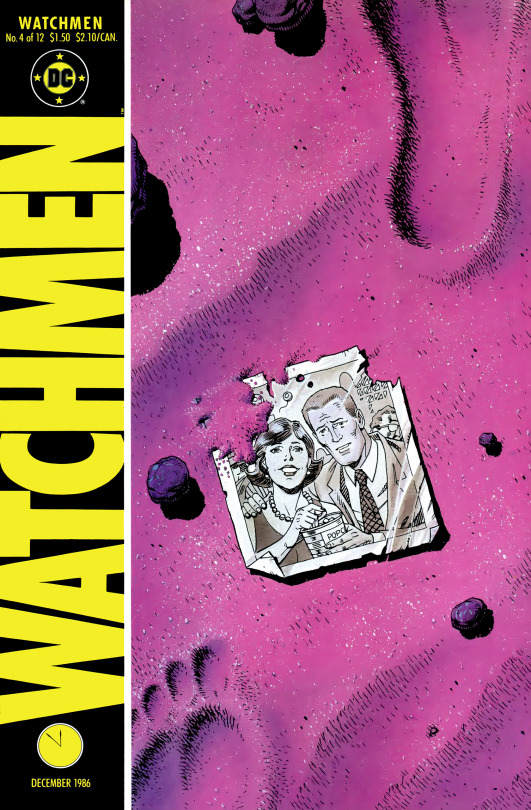
WATCHMEN #4 DECEMBER 1986 BY ALAN MOORE, DAVE GIBBONS AND JOHN HIGGINS

SYNOPSIS (FROM DC DATABASE)
On Mars, Dr. Manhattan drops the photograph of himself and Janey Slater on the Martian soil and revisits various turning points in his life.
In August 7th of 1945, a sixteen-year-old Jon Osterman is in the middle of assembling a watch when his father, a watch-maker, shows him the news of the atomic bombing of Hiroshima. Confronted with the undeniable facts of the theory of relativity, the elder Osterman declares his profession outdated and throws his son's watch-making parts out the windows, urging Jon to instead pursue a career studying nuclear physics. Jon does so in which he attended Princeton University in 1948, and graduating with a Ph.D in atomic physics in 1958.
By 1959, Jon is employed at Gila Flats in Arizona, where experiments are being performed concerning the 'intrinsic fields' of physical objects. He meets Professor Milton Glass, his colleague Wally Weaver, and his love interest Janey Slater. During a trip to New Jersey, Jon and Janey visit an amusement park. There, Janey's watchbrand breaks and is accidentally stepped on by a fat man. Jon decide to fix the watch and finally consummate his relationship with Janey.
One month later, on August, shortly after his thirtieth birthday, Jon plans to give Janey the repaired watch, only to discover he has left it in his lab coat which is inside the intrinsic field experiment test chamber. When retrieving his coat inside the chamber, he is accidentally lock in. Once Professor Glass and the others found Jon, they are shocked and horrified. Glass tells John that the chamber's door has locked automatically and the generators have already began warming up to begin an experiment: removing the intrinsic field from cell block fifteen. Jon is locked in and the door cannot be open or override the countdown. Jon could only accept death and examines the watch he has put back together while his colleagues - except Janey, who cannot bear to see the last moment and flees the room - watch in horror as the countdown reaches zero. Jon is disintegrated in a flash of light.
A month later, a series of strange events occur at Gila Flats involving the apparitions of a disembodied human circulatory nervous system, a circulatory, and a muscled skeleton which last for seconds. The residents believed the facility to be haunted until on November 22nd, Jon returns as a tall, hairless, naked, blue-skinned man with incredible abilities. Jon return to his life with Janey, but remains somewhat emotionless and distant among his peers.
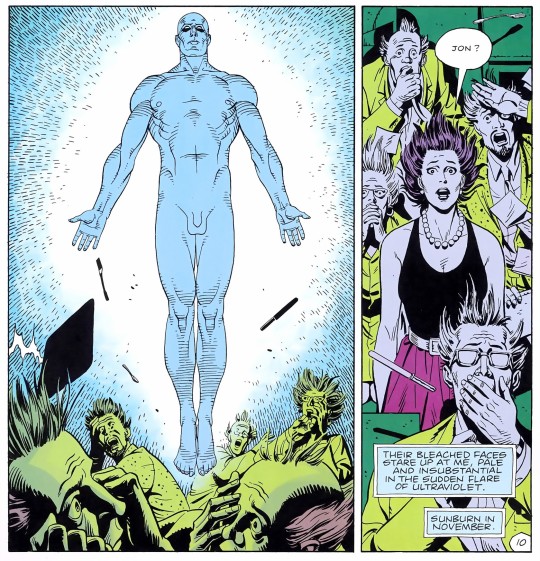
A year later, on February 1960, the American government recruited Jon as their military asset and touted him before the public as "Dr. Manhattan," the first super-hero. He is also provided with a costume which he grudgingly accepts, though he refuses to accept the icon design which is provided for him (this being a stylized orbital model of the atom). Instead, Jon chooses as his emblem a representation of a hydrogen atom, whose simplicity he declares to be something that kindles his respect; accordingly, he painlessly burns the mark into his forehead. Despite being considered America's greatest weapon, Jon wasn't able to prevent certain disasters such as the assassination of President John F. Kennedy, even though he is aware it is going to happen as he meets the President.

By 1966, during the first and only meeting of the Crimebusters, Jon fell in love with the then sixteen-year-old Silk Spectre, Laurie Juspeczyk, and bitterly ending his marriage with Janey. By 1970, Jon's true name is revealed to the public as his father had passed away in 1969 and there is no reason to conceal it.
In 1971, Jon was requested by President Richard Nixon in intervening in the Vietnam War alongside the Comedian. Within two months, the United States had won the war and forever tipping the balance of the Cold War in the West's favor. In 1975, Nixon proposed a new constitutional amendment that would allow the President to have an extended term in office. Amidst all this, Adrian Veidt publicly reveal his identity as Ozymandias and announcing his retirement from costumed heroics. Veidt invited Jon and Laurie to visit his Antarctic retreat Karnak. During a conversation between Veidt and Jon, the world have radically changed since the last fifteen years from quantum physics to transportation all thanks to Jon.
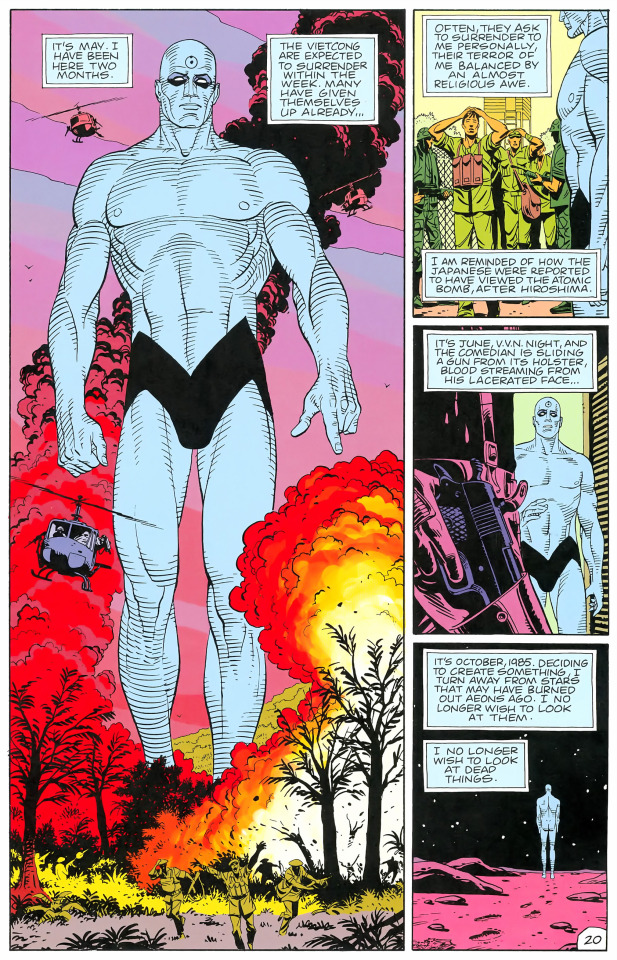
During the Police Strike of 1977, Jon and Laurie handled the riots in Washington, D.C. in which the former dispelled the rioters by teleporting them back to their homes. This caused two people to suffered heart attacks. Following the riots, the U.S. government passed an emergency bill (the Keene Act) proposed by Senator Keene which made vigilantism illegal and exempting registered adventurers such as Jon and the Comedian. Laurie and Dan Dreiberg retired their identities of Silk Spectre and Nite Owl, while Rorschach remains active in which he respond his feelings towards compulsory retirement by leaving a note on the dead body of a multiple rapist outside police headquarters. In 1985, Jon recalls walking in New York with Laurie and buying a Time magazine commemorating Hiroshima Week, and finally the events that lead him to leave for Mars.

Jon construct a giant, glass structure that rises from the soil while wondering if events had gone differently if he didn't become Dr. Manhattan. He then stands on the balcony of his structure to watch a meteorite shower.
DR. MANHATTAN: SUPER-POWERS AND SUPERPOWERS
In his book Doctor Manhattan, Super Powers and the Superpowers, Professor Milton Glass, the director of Gila Flats and sponsor of Dr. Manhattan, discuss his misgivings of Dr. Manhattan. Prof. Glass dispel the myth that he was the one who came up with the popular phrase "The superman exists and he's American" that described Manhattan in his public appearance by the American media. He instead said the chilling quote "God exist and he's American."
Glass states that the god-like Manhattan proved valuable as a pawn for the United States, in which his powers would allow him in defending the country from Soviet retaliation with ease and arguably forcing the Soviets to never risk a full-scale global conflict. Despite Manhattan's presence which have curbed Soviet adventurism, this does not spell global peace but only to exacerbate the Cold War.
To understand the mindset of the Soviet Union, Glass looks to the Russians' contributions in the Second World War and conclude that the Soviets would do anything to protect their nation from threats such as Manhattan no matter what the cost. This is supported by the sharp increase of Soviet and American nuclear stockpiles since the advent of Manhattan and making the possibility of Mutually Assured Destruction. Unfortunately, the Nixon administration does not share Prof. Glass' concerns and have become intoxicated with having a superhuman being to continually promote American interests unopposed.
Aside from affecting the international sense, Manhattan had also changed the domestic sense in which he contributed advanced technology such as electric cars and clean, economical airships. Thus, human culture have contort itself to accommodate Manhattan. Glass conclude that "We are all of us living in the shadow of Manhattan."
REVIEW
Some things work in Watchmen, that shouldn’t. One of those cases is this issue. It looks like a big departure from the murder mystery of the first issue, but all the story elements introduced here are essential to understand “the plan”.
This is also one of the chapters of Watchmen you will remember.
The script for this comic is filled with little gems, and paired with the art it takes into a different level. It is hard to tell how much Moore or Gibbons is in the art. Moore’s scripts are too detailed, but every now and then, Gibbons would improvise over the less detailed panels. Details may be Moore’s script, but the vision and everything we remember, comes from Gibbons.
This issue also explains why history on this Earth is so different than ours. This would be later explored in Tom Strong (by Alan Moore and Chris Sprouse), where the existence of a super-hero changes history (in that case it’s a more classic super-hero).
To be continued...
#alan moore#dave gibbons#john higgins#watchmen#dc comics#comics#review#1986#modern age#doctor manhattan#vertigo comics
16 notes
·
View notes
Photo
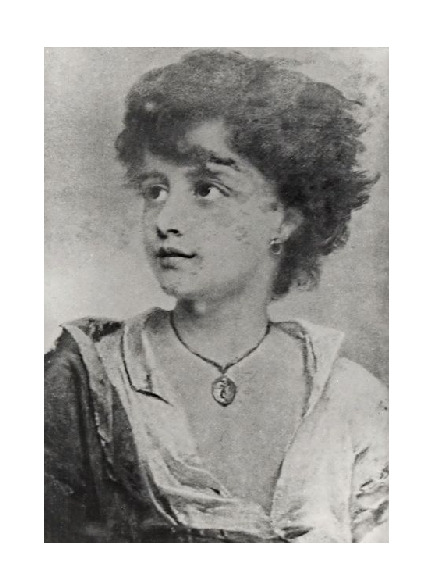
- Chopin's first love was Konstancja Gładkowska, the blue-eyed daughter of Commander of the Warsaw Castle, who studied singing at the same conservatory. How deep this feeling must have been can only be guessed from the beauty and quality of the works Chopin composed at this time: the Adagio from the f minor Concerto, dedicated to Miss Gładkowska, and the whole Concerto in e minor.
- Konstancja performed at the farewell concert held in Warsaw before the composer’s leaving to Paris.
- “He invited Gładkowska and Wołków to participate, and Soliva to conduct. “You would not believe the trouble I had getting permission for those young ladies to sing.” Chopin complained. (...) The day after the concert Chopin waxed lyrical about the evening to Tytus. His farewell appearance had exceeded all expectations, he said. It was a full house, the applause was tremendous, Konstancja was dressed in white with roses in her hair, “her attire divinely arranged to suit her complexion.” Soliva had transposed Konstancja’s aria from Rossini’s La donna del lago down a tone, the better to suit her voice. At the words “tutto detesto” she descended to the low B-natural in such a way that “Zieliński declared that one note to be worth a thousand ducats.”
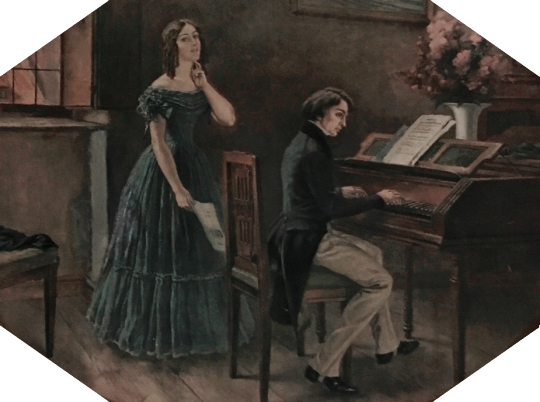
Chopin called the Larghetto movement of his concerto a “Romance”, the only time he is known to have used the term. And since it is the only piece of music about which he ever attempted to provide a literary program, his commentary is not set aside. Once again Tytus becomes recipient of some private thoughts.
‘’The Adagio of the new concerto is in E major. It is not meant to create a powerful effect; it is rather a Romance, calm and melancholy; giving the impression of someone looking gently toward a spot which calls to mind a thousand happy memories. It is a kind of reverie in the moonlight on a beautiful spring evening.’’
When Chopin talks of a “reverie in the moonlight” and “a spot which calls to mind a thousand happy memories” he comes close to suggesting that the movement enshrines an imagined love scene. His description is notable, coming as it does from a composer who generally chose to say nothing about his music in order not to let the daylight spoil the magic. Is it possible that thoughts of Konstancja lay behind this music too?
In the afterglow of this concert Konstancja and Chopin exchanged rings, althought there is no evidence that this symbolized a betrothal. Still, Chopin arranged to correspond with Konstancja throught his friend Jan Matuszyński, who was studying medicine at the university and agreed to act as a go-between. - He instructed Jan to tell her that "my ashes shall be laid at her feet." Konstancja did not respond to such an extravagant notion, which led Chopin to ask his intermediary, "Did you hand over my note? Today I regret having written in. Perhaps she is fooling me and treating it as a joke." The Russian officers who spent time in her company aroused his jealousy and he disparaged them as "the epaulets". His feelings sometimes came boiling to the surface. "How I tear my hair when thought comes that she may forget me! Those fellows! Gresser! Bezobrazow! Pisarzewski! It's too much for me. Today I feel like Othello!" - There was secrecy involved, but the mere fact that these arrangements were put in place indicates that the relationship had been taken to a new level, one in which it was not impossible for the couple to contemplate a future together after Chopin had returned from his foregin travels. The idea is borne out by some affectionate lines that Konstancja wrote in Chopin’s album on October 25, just two weeks after the farewell concert, most likely in the Chopin family apartament in the Krasiński Palace.
‘’Sorry twist of fate you weave, Yet yield we must to fortune. Remember well, as now you leave in Poland they do love you. K.G.’’
Two or three pages further on Konstancja added more lines, conveying the patriotic sentiment that "in foreign lands they may appreciate and reward you better, but they cannot love you more." She never saw the words that Chopin was add in pencil after he had left Poland and she herself had married, "Oh yes, they can!". (Dr. Alan Walker)
- He revealed his feelings for Konstancja to Tytus Woyciechowski in a letter of 1829:
“…. because perhaps I already have my ideal, whom I faithfully, not having spoken to her for half a year already, serve, about whom I dream, for whom the adagio of my concert is dedicated”.
- Incidentally, this pure love of Chopin to Gładkowska still continued after her marriage. This is evidenced with Ludwika Chopin's words from a letter to Fryderyk, ‘’You write that your love is here. (...) I wonder, how can you be so unfeeling. Palace seemed to be [for Gładkowska] more important, but you made a bad interest; you said she had a good taste, feeling! Ah, the feeling! But it seems she has that feeling only in the singing, and you are the proof for it!’’ (prof. Jacek Jadacki)
111 notes
·
View notes